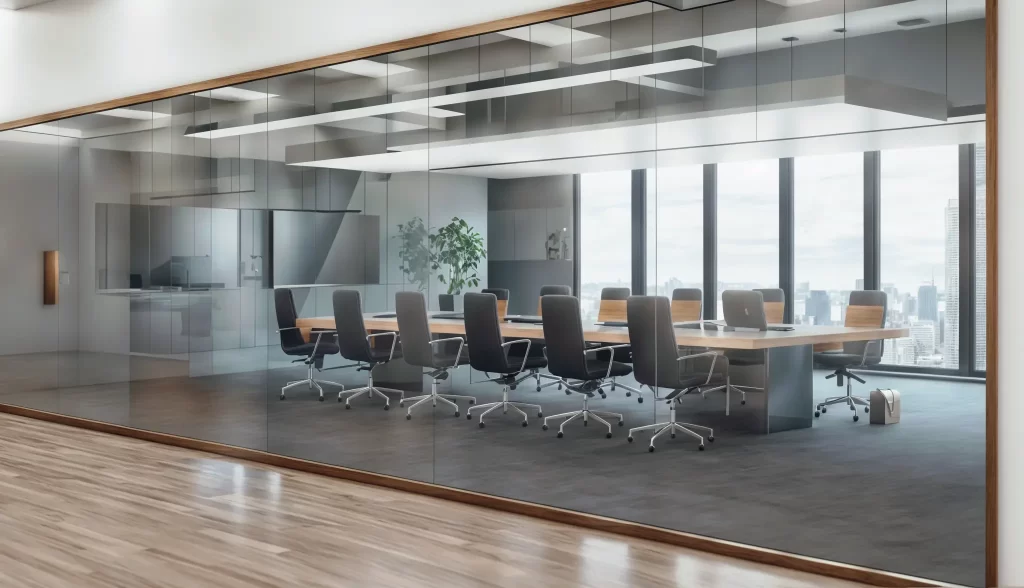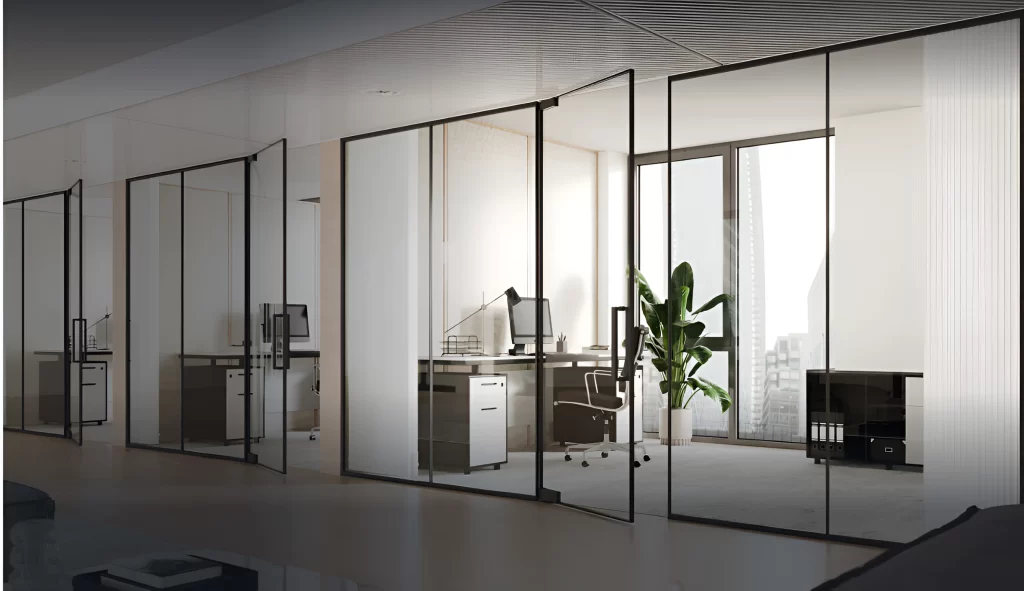
How To Install Glass Partition Walls
Glass partition walls have become increasingly popular in modern interior design, providing a sleek and sophisticated way to divide spaces without sacrificing natural light or visual openness. Whether you’re looking to create a separate area for your home office, enhance the privacy of your bedroom, or simply add some style to your living room, glass partition walls are an excellent choice. In this article, we will guide you through the process of installing a glass partition wall, from preparation to completion.
Preparation
Before starting the installation process, it’s essential to plan and prepare the space where you want to install the glass partition wall. Here are a few things to consider:
- Measure the width and height of the area where you want to install the glass partition wall to determine the number of panels you’ll need.
- Decide on the type of glass you want to use. There are various options available, including tempered glass, laminated glass, and acoustic glass. Each type has its own benefits, so choose one that suits your needs best.
- Choose the frame material. You can opt for aluminum, wood, or steel frames, depending on your preference and budget.
- Plan the layout of the panels. You can choose a simple straight line, a curved design, or even a customized shape to fit your specific needs.
- Consider adding door(s) to the partition wall. If you want to create a separate room, you’ll need at least one door.
- Ensure there are no obstructions, such as electrical outlets, light switches, or plumbing fixtures, in the area where you’ll be installing the glass partition wall.
Tools And Materials Needed:
To install a glass partition wall, you’ll need the following tools and materials:
- Drill with a screwdriver attachment
- Electric saw (circular saw or jigsaw)
- Tape measure
- Level
- Pencil and marker
- Safety glasses
- Work light
- Ladder (if necessary)
- Glass panels (tempered, laminated, or acoustic)
- Frame material (aluminum, wood, or steel)
- Door hardware (hinges, handles, locks)
- Sealants (silicone or weatherstripping)
- Screws and rivets
Installing The Frame:
To get started, we need to set up the framework. First, use a stud finder or tap on the wall to locate the studs. Then, use a level to make sure the marks are straight and level. Next, cut the frame material to the right size and attach it to the studs with screws. Double-check that the frame is square and secure before moving on to the next step.
Installing The Glass Panels:
Great! Now that the frame is set up, let’s move on to installing the glass panels. First, take the first panel and place it inside the frame, making sure it fits well and is level. Use some silicone sealant to fill in any gaps between the panel and the frame. Then, secure the panel to the frame using screws or rivets. Keep repeating these steps for each additional panel, leaving a tiny gap between them to allow for expansion and contraction because of temperature changes.

Adding Doors:
If you’re creating a separate room with the glass partition wall, you’ll need to install doors. First, choose hinges that match the style of your frame material. Attach the hinges to both the door frame and the adjacent wall. Next, install a lock or handle to finish off the door installation. Don’t forget to add weatherstripping to the bottom of the door to prevent air leaks. This will help keep the room warm and cozy, and also reduce noise from outside. With the doors installed, you’ll have a functional and stylish entrance to your new room!
Sealing The Edges:
Once all the panels and doors are installed, it’s essential to seal the edges to prevent air leaks and moisture intrusion. Start by applying silicone sealant along the edges of the panels and doors, making sure to press it firmly into the gaps. Let the sealant dry according to the manufacturer’s instructions. Then, test the seal by closing the doors and checking for any drafts or leaks. If everything looks good, you’ve successfully created a tight and secure seal!
Final Touches:
With the glass partition wall installed, it’s time to focus on the finishing touches. Start by adding floor transitions to connect the flooring on either side of the partition wall. This will create a seamless transition between the two areas.Next, fill any holes or imperfections in the wall or ceiling with spackling compound and sand smooth. This will ensure that the surface is even and smooth.Then, paint or finish the frame and doors to match the surrounding decor. This will help the partition wall blend in with the rest of the room.Finally, clean up any mess or debris that may have accumulated during the installation process.This will leave your new partition wall looking great and ready for use!

Benefits Of Using A Glass Partition Wall
In addition to being stylish and versatile, glass partition walls offer several benefits over traditional solid walls. Here are five advantages of using a glass partition wall:
- Natural Light: Glass partition walls allow natural light to pass through, brightening up the space and reducing the need for artificial lighting. This is particularly useful in areas with limited natural light.
- Visual Connection: Glass partition walls enable you to maintain a visual connection with other parts of the room or building, promoting collaboration and communication. This is especially beneficial in offices, where teams can work together more effectively when they can see each other.
- Noise Reduction: Glass partition walls can help reduce noise levels in a busy office environment by installing acoustic glass that minimizes sound transmission. This is particularly useful in call centers, recording studios, or other areas where noise needs to be kept to a minimum.
- Aesthetic Appeal: Glass partition walls are visually appealing and can enhance the overall look and feel of a room. They come in various styles and designs, allowing you to choose the perfect option to suit your taste and décor. Additionally, glass partitions can be customized with different colors, textures, and patterns, giving you greater creative freedom.
- Durability: Glass partition walls are incredibly durable and long-lasting. They are resistant to scratches, dents, and other forms of damage, making them ideal for high-traffic areas. With proper maintenance, a glass partition wall can last for many years, providing a reliable and cost-effective solution for dividing spaces.
Contact Us For Unique Products And Services
Frequently Asked Questions
You can choose from a variety of glass types, including tempered glass, laminated glass, low-iron glass, and acoustic glass. Each type has its own unique properties and benefits, so it’s important to select the right one for your needs.
Yes, you can customize the design of your glass partition wall to fit your specific needs and preferences. You can choose the style, color, and texture of the frame, as well as the thickness and type of glass used.
Cleaning your glass partition wall is easy. Simply use a soft cloth, mild soap, and water to wipe down the glass surfaces. Avoid using harsh chemicals or abrasive materials that can damage the glass.
The cost of a glass partition wall varies depending on the type of glass and frame you choose, as well as the size and complexity of the installation. However, glass partition walls can be a cost-effective alternative to traditional solid walls, especially when you consider the benefits of natural light and openness.
While it’s possible to install a glass partition wall yourself, it’s generally recommended to hire a professional contractor who has experience with glazing and framing. Improper installation can lead to safety hazards and compromised structural integrity.
- Yes, you can use glass partition walls in a bathroom or kitchen, but you’ll need to take certain precautions to ensure safety and privacy. For example, you may need to use frosted or opaque glass, or install a shower screen or curtain for added privacy.
To maintain your glass partition wall, clean it regularly, check for damaged or broken glass, and repair or replace it as needed. Also, make sure to lubricate any moving parts, such as door hinges, to keep them functioning properly.
Conclusion
Glass partition walls are an innovative and practical solution for dividing spaces while maintaining openness and natural light. With their numerous benefits, it’s no wonder why they’ve become a popular choice for homeowners and businesses alike. Whether you’re looking to create a separate area for your home office, enhance the privacy of your bedroom, or improve the functionality of your office, a glass partition wall could be the perfect answer.
We hope this article has provided valuable insights into the world of glass partition walls. Remember to consider factors like frame style, glass type, and door hardware when choosing your partition wall. With the right selection and installation, you’ll enjoy the many advantages of glass partition walls for years to come.For more informational articles like these you can visit Hals International.
